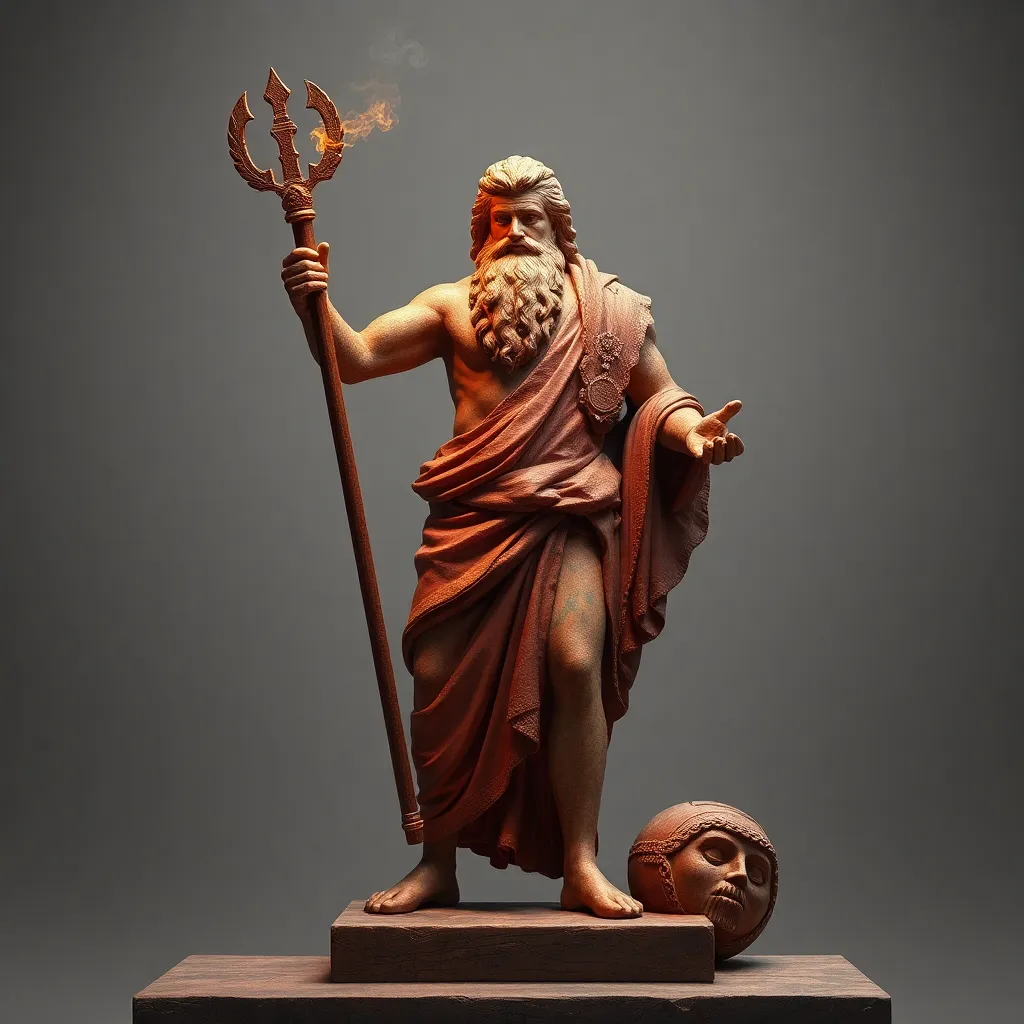Hephaestus and the Role of Craft in Society: Ancient Perspectives
Introduction to Hephaestus: The God of Craft and Fire
In the rich tapestry of Greek mythology, Hephaestus stands out as the god of fire, metalworking, and craftsmanship. Revered as the divine craftsman, he embodies the skill and creativity associated with artisans and builders. His importance in ancient societies cannot be overstated, as craftsmanship was not merely a means of livelihood but a pivotal element of cultural identity and societal progress. The products of craft—from tools and weapons to art and architecture—shaped the very foundation of daily life in the ancient world.
Mythological Origins of Hephaestus
Hephaestus is often depicted as the son of Zeus and Hera, although some myths suggest he may be the child of Hera alone, born out of jealousy. His birth is shrouded in tales of rejection; Hera, upon seeing his physical deformity, cast him from Olympus. This fall resulted in his lameness, a symbol of the struggle between divine perfection and human imperfection.
In ancient art, Hephaestus is commonly represented as a bearded man, often holding tools like hammers and tongs. His imagery reflects the fire and forge, showcasing the duality of creation and destruction inherent in his craft. He is frequently accompanied by symbols of labor, such as an anvil or flame, emphasizing his connection to the transformative power of fire.
The Role of Craftsmanship in Ancient Greek Society
Craftsmanship was a cornerstone of ancient Greek culture. Artisans, including blacksmiths, potters, and builders, played vital roles in the economy and community. Their skills were essential for:
- Creating everyday tools and utensils
- Building infrastructure such as temples and homes
- Producing art that conveyed cultural values
The distinction between divine craftsmanship, represented by Hephaestus, and human craftsmanship highlights the reverence ancient Greeks held for skilled artisans. While Hephaestus’ creations were seen as perfect and imbued with divine inspiration, human-made items were celebrated for their creativity and utility, reflecting the societal values of innovation and practicality.
Hephaestus as a Patron of Artisans
As the patron of artisans, Hephaestus’ influence extended across various crafts. His mastery over metalwork, pottery, and other trades made him a central figure in the lives of many craftsmen. Myths often depict him as a mentor, bestowing knowledge and skills upon mortals. For example:
- He taught the skill of metalworking to the legendary craftsman Daedalus.
- He created the magical bronze automaton Talos, representing the pinnacle of craftsmanship.
These narratives not only highlight his role as a guide but also underscore the belief that true craftsmanship is a divine gift, connecting artisans to the god himself.
The Interplay Between Craft and Technology in Antiquity
Hephaestus is credited with numerous innovations that transformed ancient technology. From the invention of tools to the creation of sophisticated mechanisms, his contributions had a lasting impact on society. Historical accounts attribute the following innovations to Hephaestus:
- The first plow, revolutionizing agriculture.
- Advanced weaponry, aiding in warfare.
- Intricate machinery used in temples and public spaces.
When comparing ancient craft techniques with modern practices, one can observe a blend of tradition and innovation. While contemporary technology has transformed many aspects of crafting, the underlying principles of creativity and skill remain relevant.
Hephaestus in Literature and Philosophy
The literary references to Hephaestus in ancient texts, such as those by Homer and Hesiod, reveal the profound philosophical implications of craftsmanship. In the “Iliad,” Hephaestus is depicted creating armor for Achilles, symbolizing the intersection of artistry and function. Hesiod’s “Works and Days” also emphasizes the value of hard work and the rewards of craftsmanship.
Philosophically, craftsmanship has been associated with virtue and ethics, with many ancient thinkers arguing that the pursuit of skill and mastery is a path to personal fulfillment. The relationship between the craftsman and his work reflects broader themes of human purpose and societal contribution.
Cultural Variations: Hephaestus and Craft in Other Civilizations
Hephaestus’ influence extends beyond Greek mythology, resonating in other cultures through similar deities. For instance, Vulcan in Roman mythology embodies many of the same attributes as Hephaestus, representing fire and craftsmanship. Other civilizations also celebrated gods of craft, such as:
- Ptah in Egyptian mythology, revered as the creator god and artisan.
- Goibniu in Celtic mythology, a god associated with craftsmanship and brewing.
These parallels illustrate the universal appreciation of craft and the divine inspiration attributed to skilled artisans across cultures.
Conclusion: The Enduring Legacy of Hephaestus and Craft in Society
Hephaestus remains a powerful symbol of human creativity and resilience. His legacy is evident in the continued appreciation for craftsmanship in contemporary society, where artisans are celebrated for their skills and contributions. As we reflect on the role of craft in our lives, we recognize that the essence of creation—whether through art, technology, or everyday objects—continues to connect us to the spirit of Hephaestus.
In essence, Hephaestus represents not just the divine aspect of craftsmanship, but also the enduring human pursuit of excellence, creativity, and the transformative power of labor. The stories of Hephaestus remind us of the importance of embracing our creative abilities and the societal impact these skills hold, echoing through the ages.




